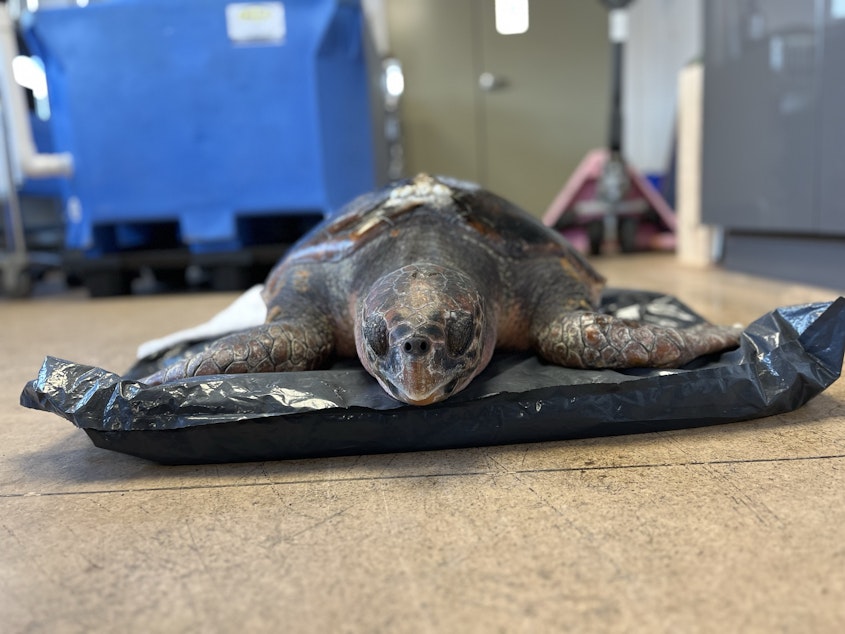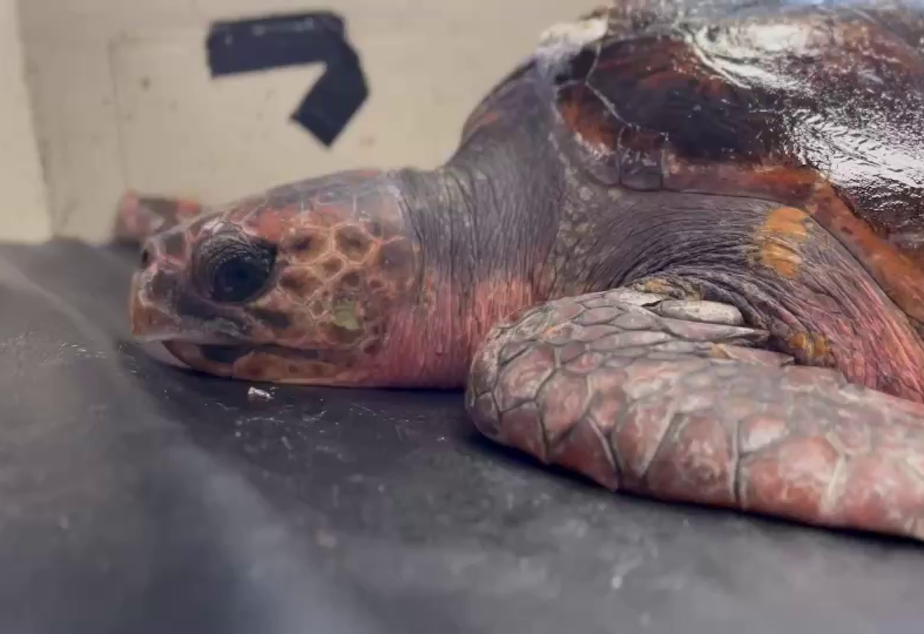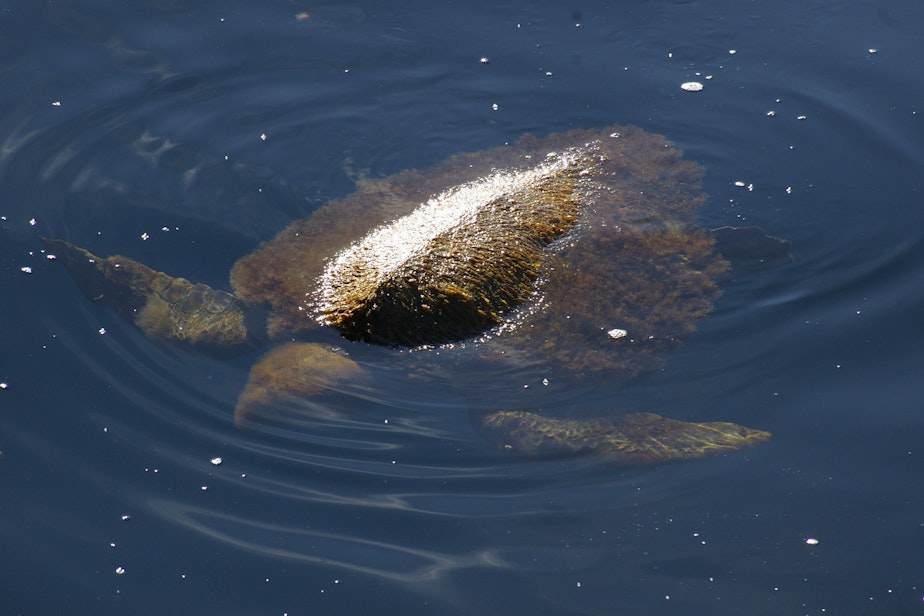Warm-water turtle rescued from Salish Sea after fishermen find her stunned by cold

A loggerhead sea turtle, a species usually found in warmer waters much farther south, was spotted near the Washington-British Columbia border in the Strait of Juan de Fuca on Sunday.
A father and son checking their crab traps near Pedder Bay at the southern tip of Vancouver Island, across the strait from Port Angeles, Washington, spotted an 80-pound turtle, floating listlessly in a kelp bed.
After conferring with a local zoologist and provincial authorities, the fishermen captured the cold-stunned turtle and transported it by boat, wheelbarrow, SUV, and ferry to the Vancouver Aquarium for emergency care, according to the Victoria Times-Colonist.
The female turtle’s core body temperature had fallen to 52 degrees Fahrenheit, according to Vancouver Aquarium spokesperson Todd Hauptman.
Like other cold-blooded reptiles, sea turtles rely on their surroundings to maintain their body temperature.
Loggerhead sea turtles in the North Pacific Ocean begin life as eggs buried on sandy beaches in southern Japan. Young turtles migrate to waters near Mexico and southern California, an intercontinental swim of 6,000 miles or more.
Somehow, this immature female, believed to be 15 to 20 years old, wound up off the Washington and British Columbia coast mid-winter and was stunned by the cold.

 12 secs
An 80-pound loggerhead sea turtle receives emergency care at the Vancouver Aquarium in Vancouver, Canada, on Feb. 5, 2024.
12 secs
An 80-pound loggerhead sea turtle receives emergency care at the Vancouver Aquarium in Vancouver, Canada, on Feb. 5, 2024.
Sea turtles grow weak and unable to swim when exposed to low temperatures below about 50 degrees Fahrenheit. Turtles with this condition, known as “cold-stunning,” are often witnessed along East Coast and Gulf Coast beaches following extreme winter weather.
If exposure to cold is brief, a turtle can recover quickly, according to the National Oceanic and Atmospheric Administration. Longer exposures can be deadly.
A team at the Vancouver Aquarium has been trying to slowly raise the rescued reptile's body temperature and giving her fluid therapy, antibiotics, and rest. Hauptman said Tuesday the turtle remains in critical condition.
It is only the second time a loggerhead turtle has been documented on Canada’s west coast, though there have been other unconfirmed sightings. It is believed to be the first confirmed loggerhead sighting in the Salish Sea, the shared inland waters of British Columbia and Washington.

Both confirmed Canadian sightings occurred during winters with El Niño conditions, which typically raise water temperatures in much of the Pacific.
The Washington Department of Fish and Wildlife calls loggerhead turtles “rare visitors” off Washington’s outer coast, with “very few sightings reported off Washington, Oregon, and northward to Alaska.”
Biologist Gavin Hanke with the Royal British Columbia Museum said sea turtles regularly move north when conditions are warm and usually have problems if they don’t migrate away before waters cool again in the fall.
Loggerheads are the world’s second-largest sea turtle, weighing up to 250 pounds, with females reaching maturity at about 35 years old.
They are listed as an endangered species in both Canada and the United States, with threats including accidental capture by fishing gear, damage to beaches where they nest, and plastic pollution.

